By Louise Irvine
Rainbows are a symbol of hope in many cultures. During lockdown, drawings of rainbows have appeared in windows across the globe to express solidarity. Rainbows are a common natural phenomenon, and their ephemeral existence has inspired marvel, myths, and meanings since the dawn of humanity.
Most of us can identify with Judy Garland in the Wizard of Oz movie who sings that somewhere over the rainbow, “dreams come true” and “troubles melt like lemon drops”. But as this magical place is unattainable, she laments: “Birds fly over the rainbow – why then, oh why, can’t I?”
Fortunately, the new rainbow glass designs by Anne Orvieto in the WMODA Studio collection are easily obtained in the museum shop. When Anne first discovered fused glass art, her “Kiln-Whisperer”, Chelsea Rousso, encouraged her to explore beyond the traditional boundaries of kiln-formed glass. Anne is inspired by the beauty of rainbows and every sunrise and sunset in Florida where the light creates a myriad of ever-changing colors, much like the iridized glass. She shows the magic of her vivid rainbow glass art in the photographs she takes with light streaming through her window. Anne made her first rainbow piece to celebrate the birth of her friend’s “rainbow” baby. Just as beautiful light shines at the end of a storm, a “rainbow baby” is a child born after a prenatal loss.
In Western art and culture, rainbows promise better times to come. In the Bible’s book of Genesis, after creating a flood to wash away humanity's corruption, God put the rainbow in the sky as a covenant of his promise that he would never again destroy the Earth with a flood. In ancient Greece and Rome, Iris was the personification of the rainbow and the messenger of the gods. She was sometimes represented wearing a coat of many colors with wings so beautiful that she could light up a dark cavern. She traveled with the speed of wind carrying messages from one end of the world to the other and linked the gods to humanity.
Iris, the Keeper of Rainbows has been portrayed in paintings by the British fantasy artist Josephine Wall. She also depicts Gaia, the primordial Mother Goddess, showering the Earth with rainbows of hope in her masterpiece No More. Rainbows and ethereal rainbow colors feature frequently in Josephine Wall’s art and the WMODA shop has a wide range of her limited edition giclee prints, posters, and related merchandise for sale.
Rainbow colors are also featured in the wearable art of Marielle Plaisir, a French Caribbean artist, who works in Miami Beach. Her Clouds design for silk scarves, handbags, and wallets is one of the most popular in her Les Barbares collection featured at WMODA. Marielle uses high-quality materials, including 100% silk twill, Italian and American leather, which is worked by French artisans to create a marriage between art and fashion. Marielle defines herself as “a dreamer artist with the urgent need to create poetic works that make the world dream”.
In Australian Aboriginal Dreamtime culture, the rainbow-serpent is a powerful spirit of the sky that has been depicted in rock art dating back at least 10,000 years. In Japanese myth, the rainbow is a floating bridge of heaven on which the creators of the world descended to create land from the ocean of chaos. For the Chinese, it was a crack in the sky made by the mother goddess Nuwa. In Buddhism, it is possible to become a spiritual rainbow as it symbolizes the highest state that can be reached before Nirvana or enlightenment.
Of course, most of us cannot reach the end of the rainbow where Irish legend tells us the mischievous leprechauns have buried a pot of gold stolen from the Vikings. In Norse mythology, the rainbow bridge was the only means of communication between Asgard, the realm of the gods, and Midgard, the home of men. According to Daisy Makeig Jones, the designer of Wedgwood Fairyland Lustre ware, the burning bridge spanned the land of the Black Dwarfs or Elves and the country of Giants which she also depicts on her Bifrost vases.
Rainbows appear as translucent arcs in the sky when the sun shines onto water droplets, shattering its white light into an array of brilliant colors. Rainbows are actually full circles and they can be seen occasionally from a plane or even a high mountaintop. Viewers on the ground can only see the light reflected by raindrops above the horizon. Each person’s horizon is a little different and as rainbows appear to move, the promise of finding treasure is always elusive.
In recent times, the rainbow has become a symbol of diversity and respect. A rainbow flag has been used to reflect diversity in sexuality since 1978, becoming the international symbol of the gay rights movement.
Archbishop Desmond Tutu coined the term Rainbow Nation to describe post-apartheid South Africa at peace with itself and the world after the first fully democratic election was held in 1994. A riot of rainbow colors can be discovered in our Safari for the Soul gallery thanks to the brilliant painters from Ardmore Ceramic Art in KwaZulu Natal.
The Rainbow Generation is a term used for those born between 1990 and 2000, believed to be the generation that brought much-needed tolerance and equality to the world. In the words of Maya Angelou, the poet and civil rights activist, “Try to be a rainbow in someone else’s cloud.”
Read more about rainbows at WMODA
Read more about glass artist Anne Orvieto
Learn more about the science of rainbows
Read more about Anne Orvieto...
Anne Orvieto - The Rainbow Connection
Anne Orvieto - Sunflowers for Solidarity
Anne Orvieto - Who’s Who @ WMODA

Double Rainbow
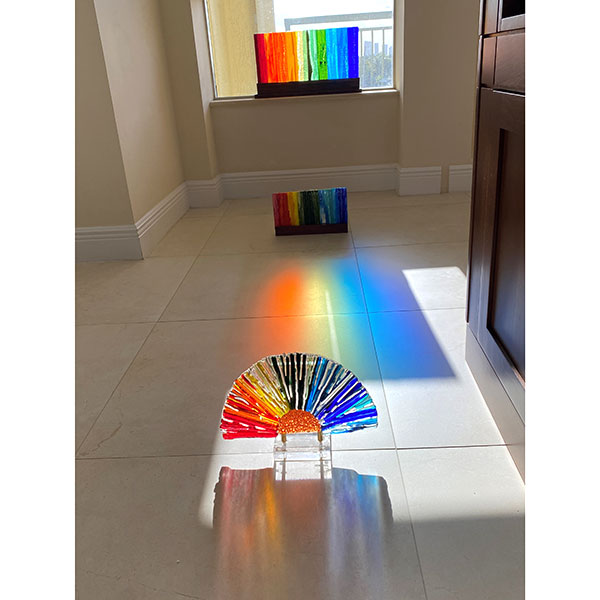
Rainbows by A. Orvieto
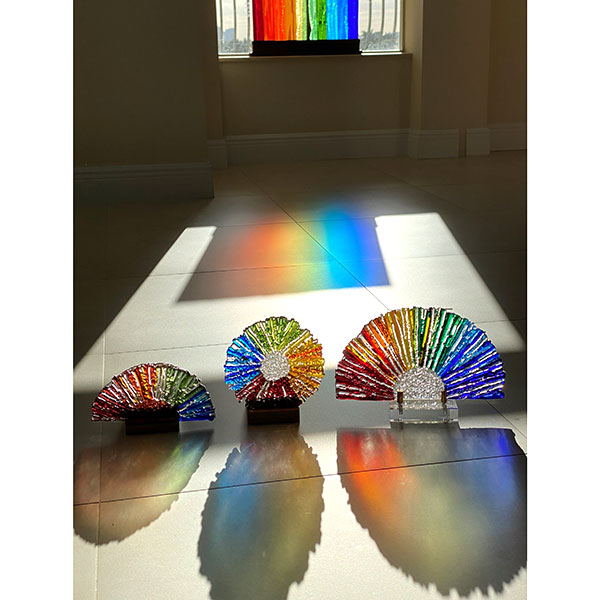
Rainbows by A. Orvieto
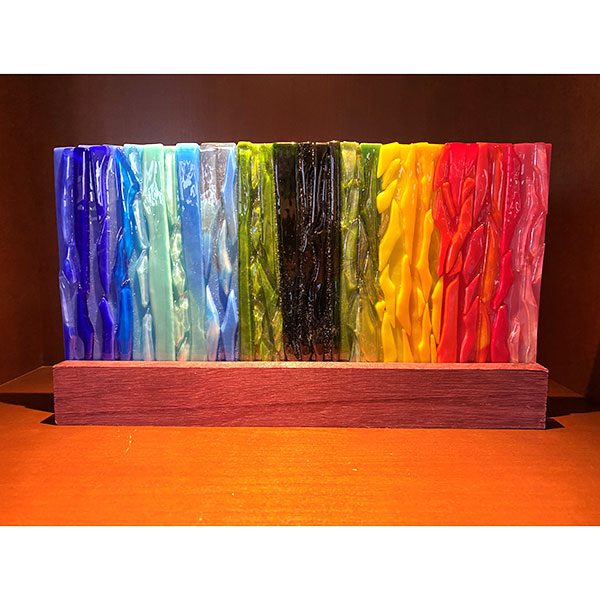
Rainbow by A. Orvieto

Rainbow Fan by A. Orvieto

Rainbows by A. Orvieto
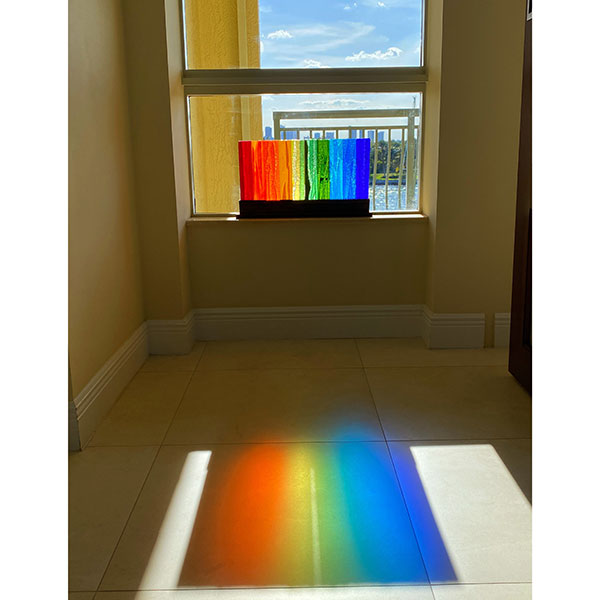
Rainbow by A. Orvieto

Rainbow by C. Rousso
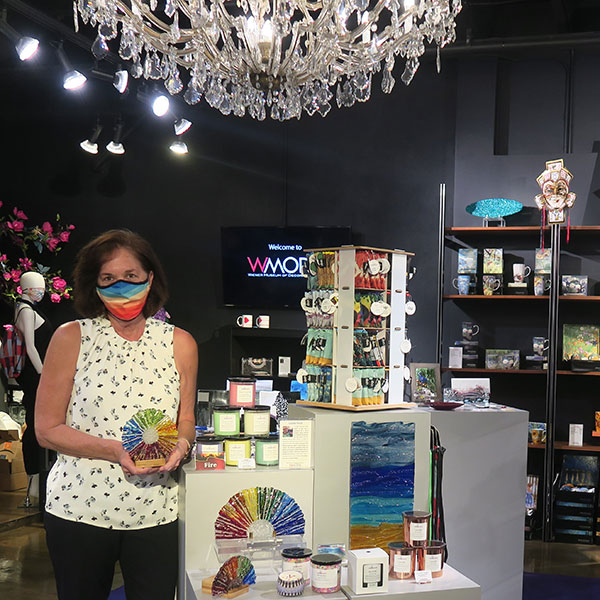
Anne Orvieto with her Rainbow glass at WMODA

Iris, Keeper of the Rainbow by J. Wall
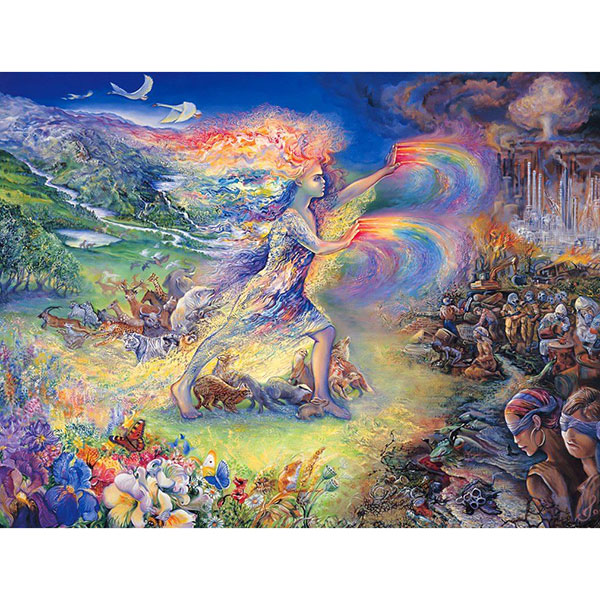
No More! by J. Wall
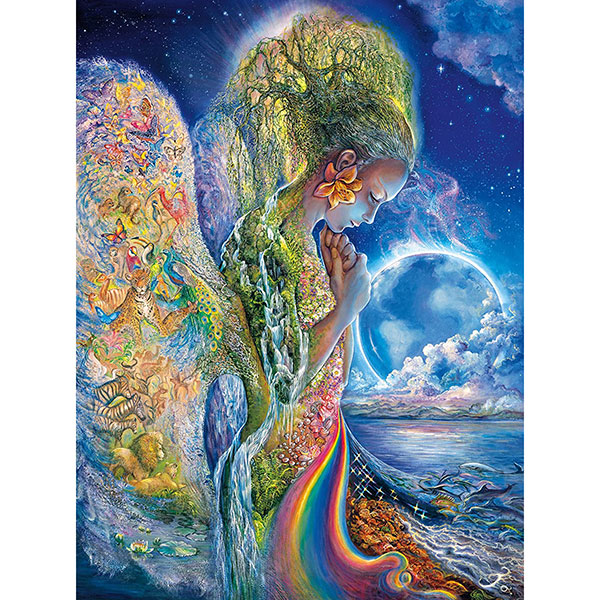
Sadness of Gaia by J. Wall
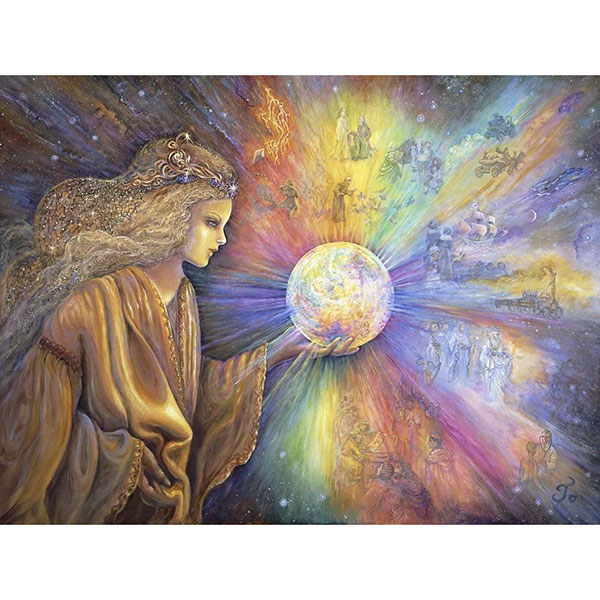
Oracle by J. Wall

Enchantment by J. Wall
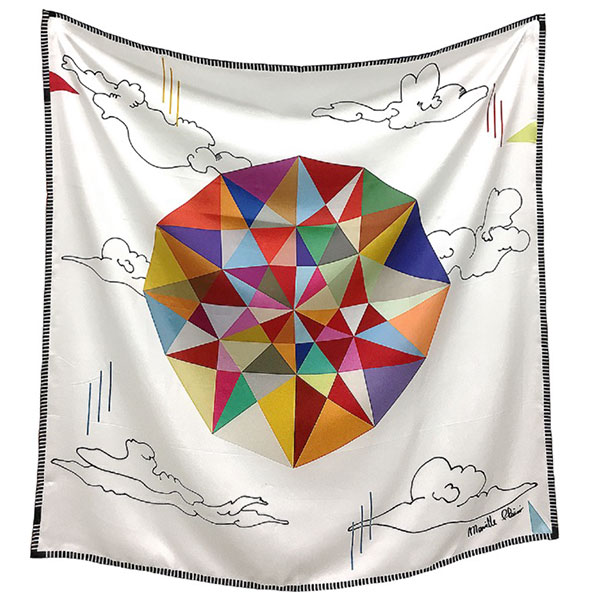
Cloud Silk Scarf by M. Plaisir

Cloud Silk Scarf by M. Plaisir
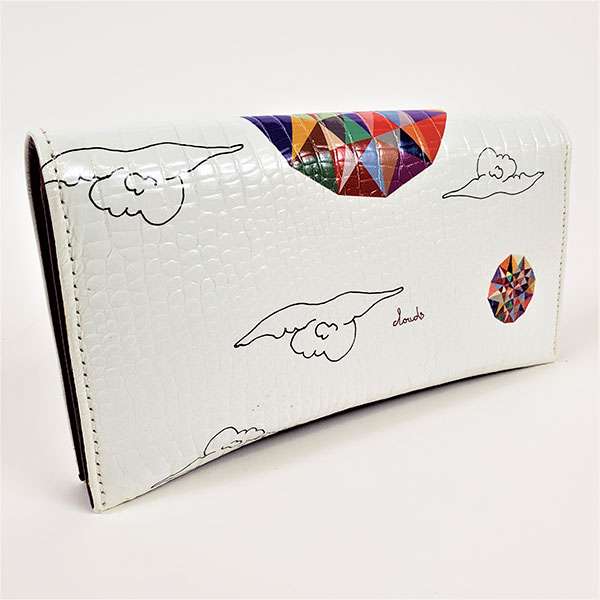
Cloud Clutch by M. Plaisir
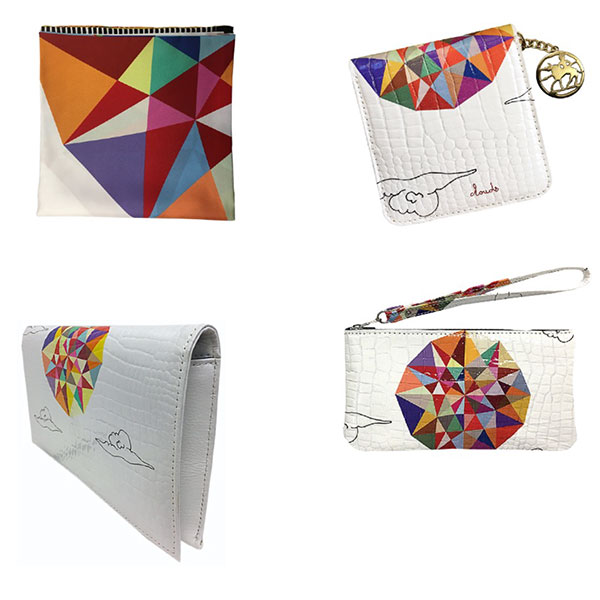
Cloud collection by M. Plaisir

Marielle Plaisir display @ WMODA
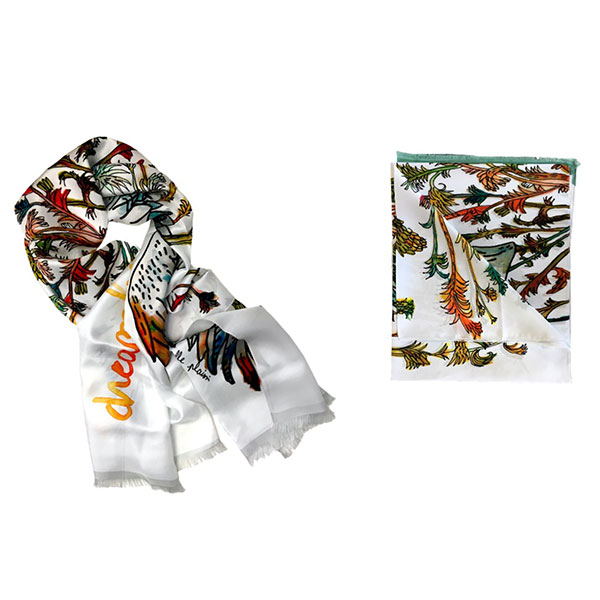
Dreamlife of Angels by M. Plaisir

Veronica with scarf by M. Plaisir
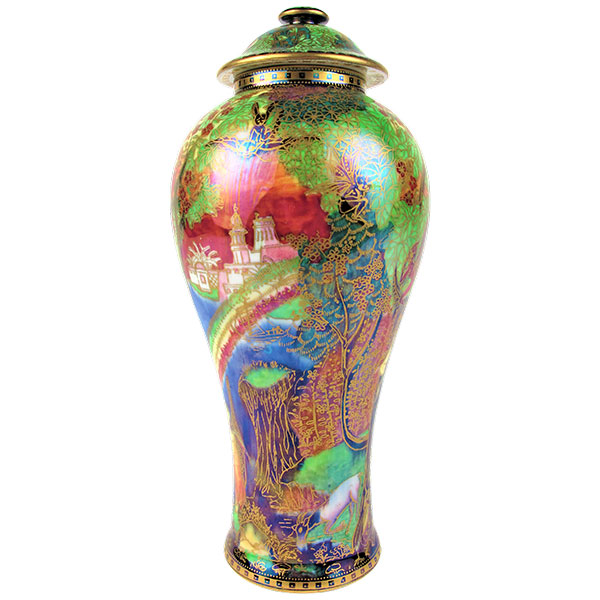
Wedgwood Fairyland Lustre Bifrost Rainbow Lidded Vase by D. Makeig Jones
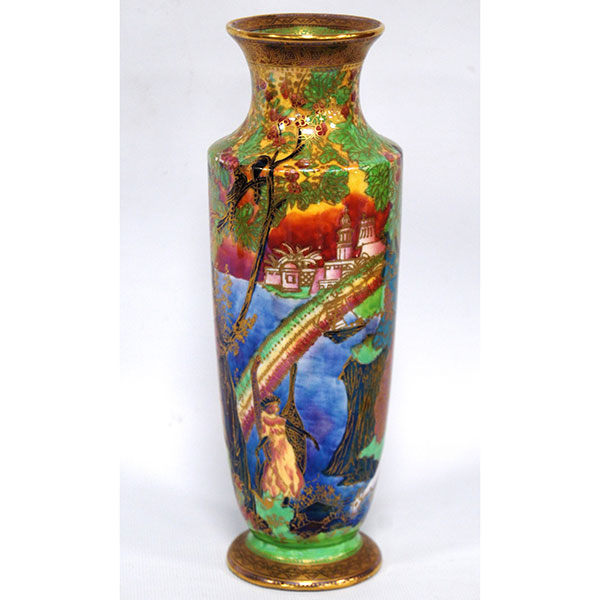
Wedgwood Fairyland Lustre Bifrost Rainbow Lidded Vase by D. Makeig Jones
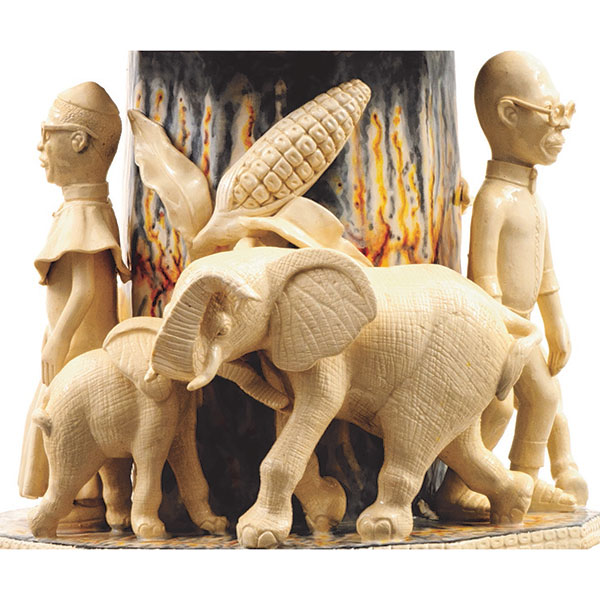
Ardmore Abundance depicting Archbishop Desmond Tutu & Mahatma Ghandi
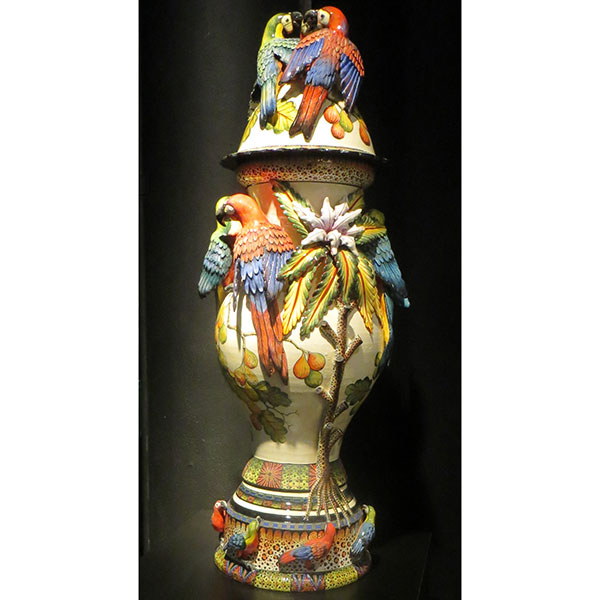
Ardmore Parrots Vase
